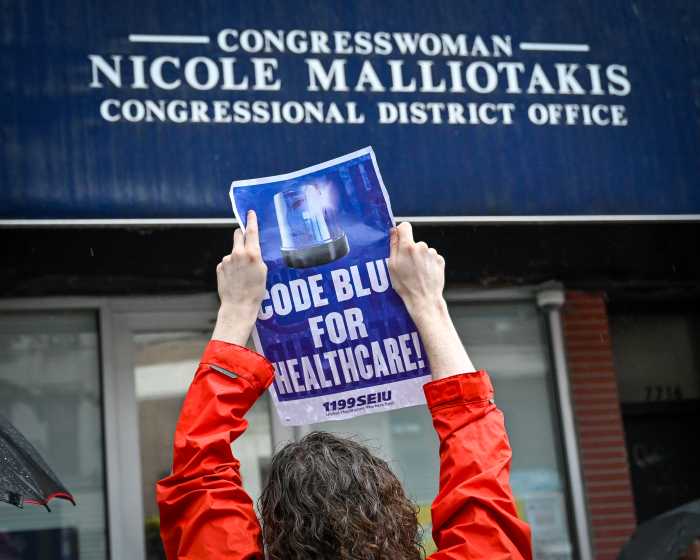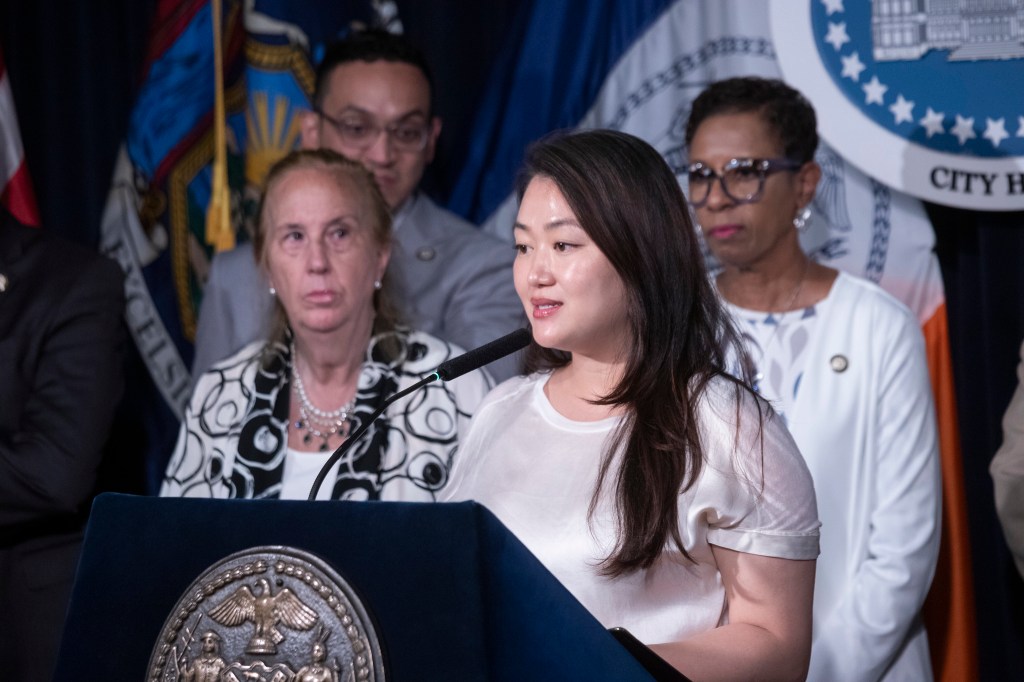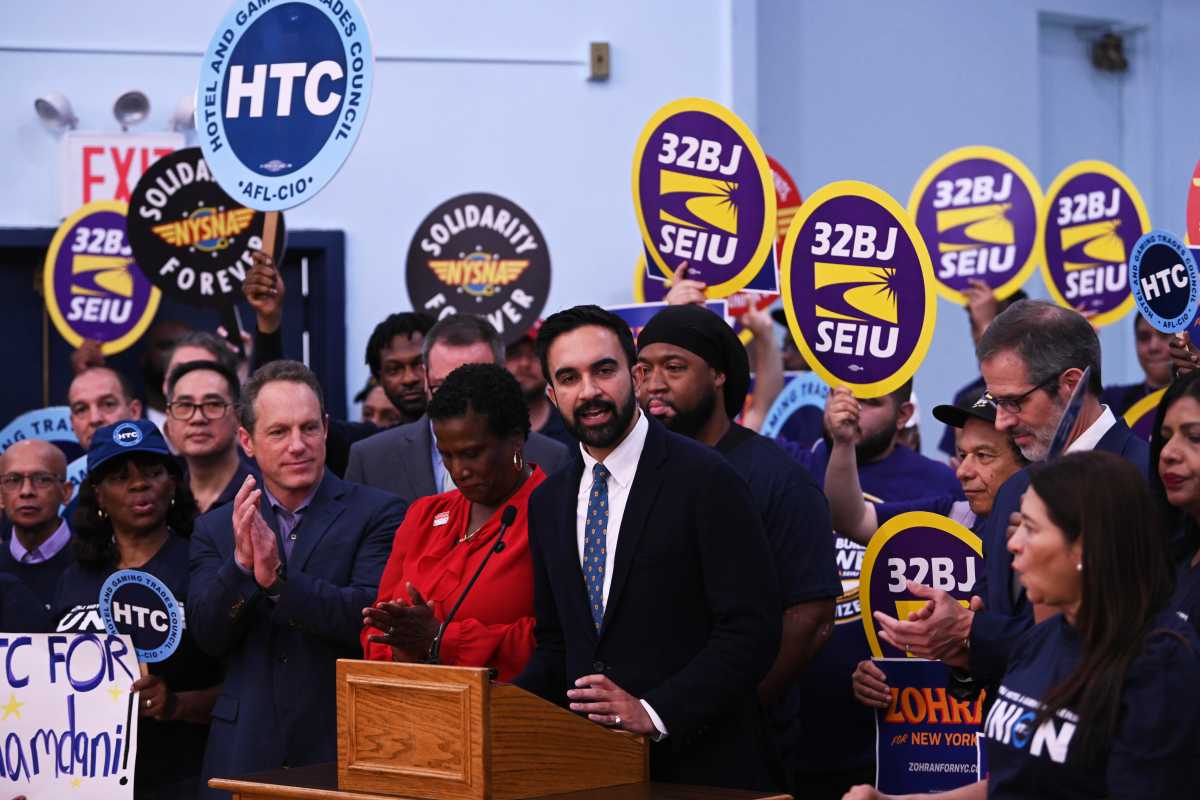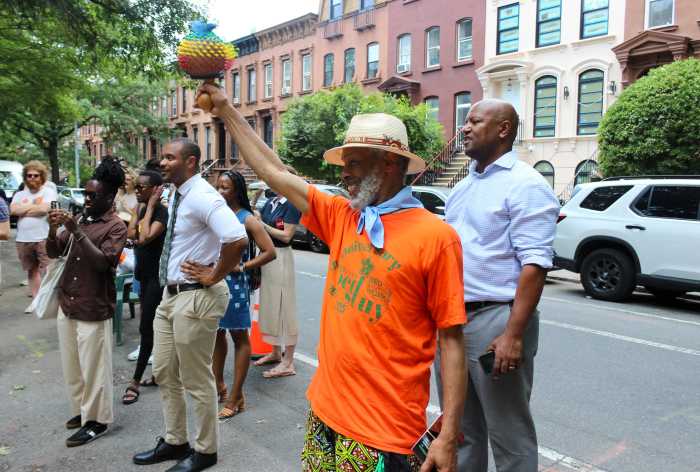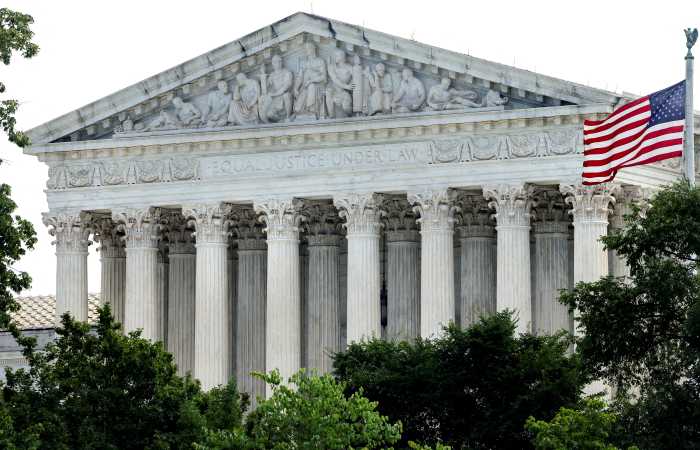The modest public park on the triangle near the Brooklyn Academy of Music,
where Fulton Street and Lafayette Avenue intersect, represents to many
Fort Greeners everything problematic with the BAM Local Development Corporation.
With its iron gates closed except for weekend hours, BAM Park is beautiful
to look at but remains largely inaccessible to the greater public, residents
complain.
Those who want to utilize the well-manicured park during the week must
appeal to officials of the BAM LDC, who have been charged with the design
of a cultural district in Fort Greene, and who opened the park in July
2002 as a “first step” in that process.
Much of the land targeted for the cultural development is city-owned and
marked for urban renewal under the BAM Cultural District plan. But a neighborhood
group formed in response to the plan, the Concerned Citizens Coalition,
is making the rounds at public meetings and presenting their own design
for one of the cultural district’s claimed sites of land.
Over the past few weeks, members of the CCC, a consortium of community
groups, politicians and religious leaders, have been showing off a “conceptual
plan” for the north site of the project, an area bounded by Ashland
Place, Rockwell Place, Fulton Street and Lafayette Avenue.
The missing link is the BAM LDC, which has yet to invite, communicate
with, or even respond to the designs. BAM LDC representatives saw the
designs at a Sept. 15 meeting of the Fort Greene Information Exchange,
a kind of neighborhood clearinghouse for ideas.
That alternate plan, whose development was funded by a $50,000 Assembly
grant, includes 380 condominiums that would be sold to buyers with varying
levels of income (50 percent at market rate), 20,450 square feet for arts-related
retail space, 42,000 square feet for performance space, a 499-seat community
theater and 214 underground parking spots.
During the presentation, Rudy Bryant, who designed the alternate plan
and who is associate director of Pratt Institute’s Center for Community
and Environmental Development, flipped through a visual slideshow, and
listed concerns.
Tally of jobs to be created? 355 permanent, 2,241 temporary. Interested
investors? Bryant rattled off a list of big-name corporations, although
their interest in the CCC plan could not be confirmed by press time. Projected
cost? $220.5 million. Cost to taxpayers? $12.5 million.
But according to a spokeswoman for the city’s Economic Development
Corporation, which is working in partnership with the LDC, the formal
process would be to issue a request for proposals, which hasn’t happened
yet.
“We expect to issue an RFP for portions of the north site by the
end of this year or early next year,” said EDC spokeswoman Janel
Paterson. She clarified that the site would be dealt with parcel by parcel,
and development groups that apply for site control would have to compete
with plans that fit within the LDC’s specifications for the space.
The LDC, however, has yet to release any word about those specifics. Numerous
calls to LDC executive director Jeanne Lutfy were not returned.
Among the priorities of the CCC are maintaining the multicultural and
ethnic diversity of Fort Greene, keeping local business owners nearby
and helping them flourish, and including small and emerging cultural and
arts groups.
Bryant complained that meetings held between members of the CCC and the
BAM LDC over three years, starting in December 2001 and petering off in
March 2003, were bunk, and talking didn’t get them anywhere.
Fort Greene Councilwoman Letitia James asserts that at those meetings
the CCC members were simply told what sites were planned for development
and that their input was not welcomed.
“It was BAM LDC doing all the talking. And it was the vision of one
man, not the community,” James said, referring to Harvey Lichtenstein,
the former Brooklyn Academy of Music director who is now chairman of the
board of the BAM LDC. “That came across at the town hall meetings.
People were pretty much outraged and offended.”
Yet without the LDC’s endorsement, CCC’s plan could be meaningless.
The joint power of the LDC and EDC could either stack the deck against
CCC’s plans, or guarantee their consideration.
Paterson suggested that if a development group had the advantage of foresight
into the RFP specs, they might have time to prepare in advance for the
foreseen call for proposals, which is predicted for December or January.
Lee Silberstein, a spokesman for the BAM LDC, said, “BAM Cultural
District is a vision of [Lichtenstein’s] and other people who’ve
been dealing with the arts for a very long time.”
“The north site will include a mix of housing,” Silberstein
said, explaining that it would be a mix of rental apartments and condominiums
totaling 500 units, 50 percent of which would be made affordable with
the help of government subsidies.
“It could hold art galleries, dance studios, a theater, a small performance
space, very plain, very simple,” that could serve anything from dancers
to choirs, Silberstein said.
Additionally, he said, the liquor store on the corner of Fulton Street
and Ashland Place falls into the urban renewal zone, and is therefore
“a designation that allows for eminent domain to happen.”
“The planning is going pretty far,” said Silberstein. “Ultimately
I think the city and LDC are having conversations with a series of cultural
groups. Probably, I’m just guessing, there would be an RFP for a
developer to come up with,” he said, but made it clear that the ultimate
decision would go through the Economic Development Corporation.
Of the triangular BAM Park, Silberstein said, “The intention was
to offer programming in the park to the extent possible in the short term.
The development of the cultural district involves a significant amount
of streetscaping and re-landscaping. And one of the things in the overall
re-landscaping of the area was to reopen and re-landscape the park. There
was never a commitment to be open anything more than the BAM LDC could
provide for it in terms of staffing.”
Paterson confirmed that although her agency has final say, an RFP wouldn’t
necessarily be the only to dispose of the land.
“We would work with local officials and the BAM LDC to determine
the best disposition,” she said, but mentioned that a way other than
the open-bidding process of the RFP would be sole-sourcing the land.
“In special circumstances, where the adjacent property owner may
be interested in it for expanding his business, or the proposal has a
specific public benefit to the community,” she explained, the land
would be sole-sourced.
Sole sourcing is one of James’ biggest fears about the space. She
knows that in the event the EDC approves such a form of disposal, CCC
would lose any influence.
“I’m hoping there’ll be some compromise,” James said,
between the LDC and CCC.
“I don’t know who BAM LDC represents other than BAM LDC,”
she said.


